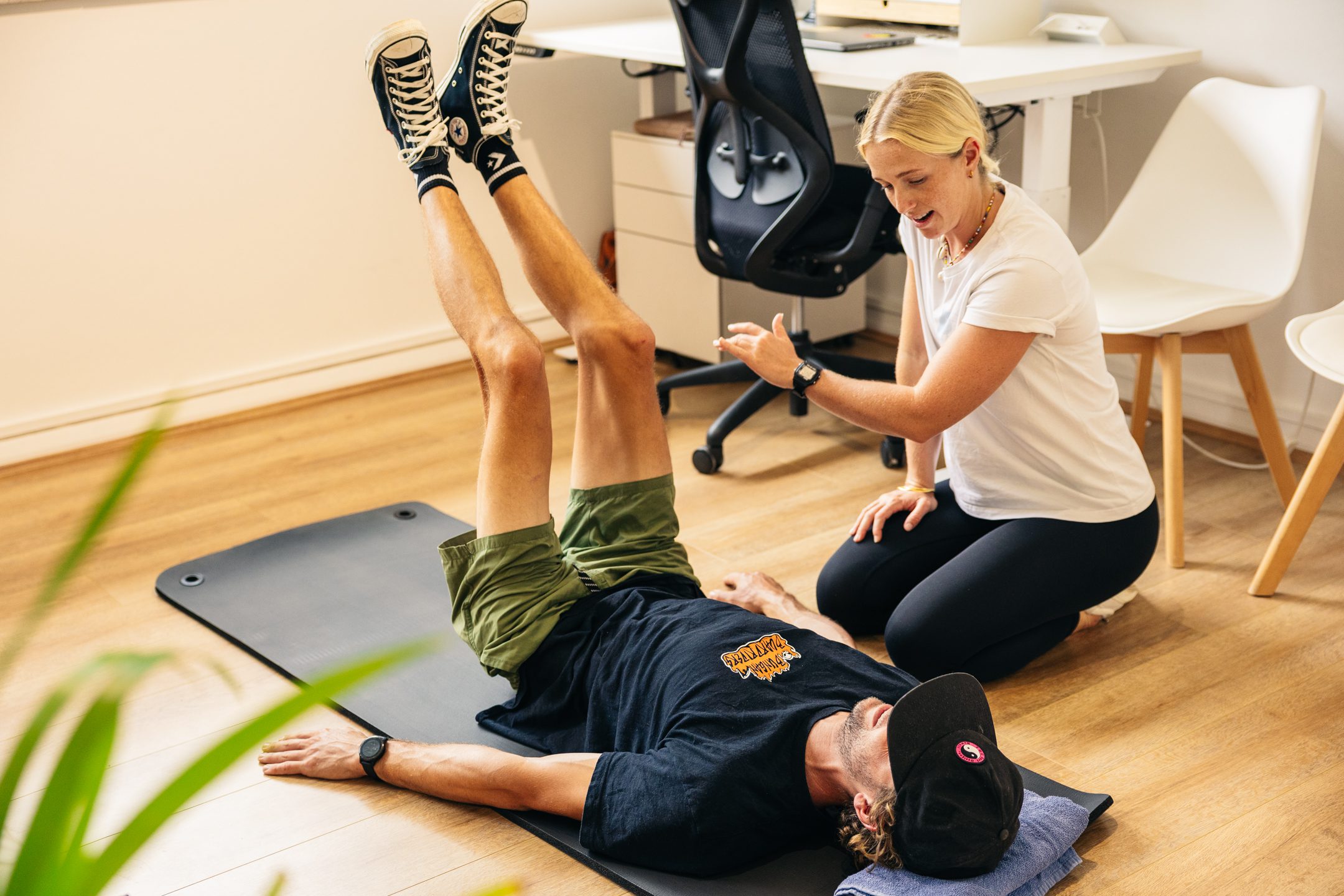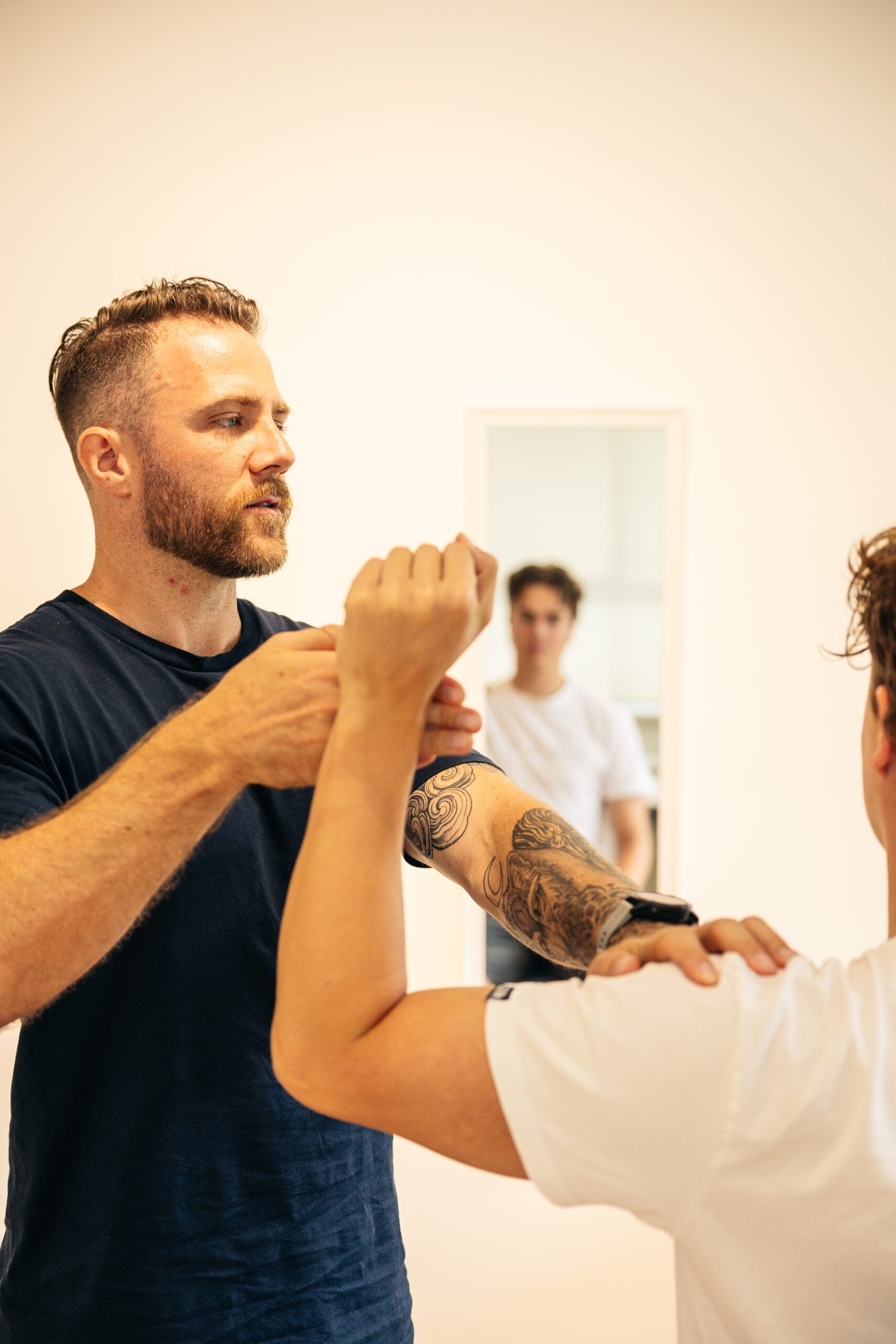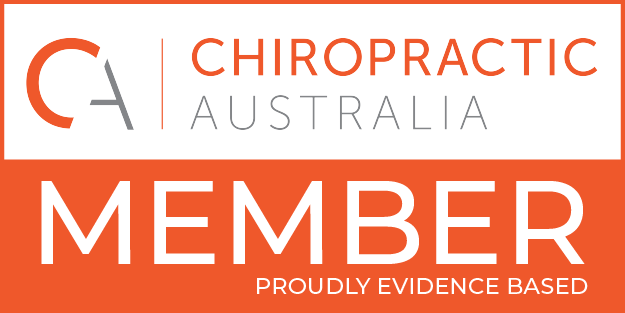In the realm of sports injuries, few are as feared and common as a torn anterior cruciate ligament (ACL). The ACL is a ligament that connects your thigh bone (femur) to your shin bone (tibia). This can tear when you stop quickly, change director or with jumping. Whether you’re an athlete or simply someone who enjoys an active lifestyle, an ACL tear can be a major setback. But luckily, there are a few different options to send you on the path of ACL recovery.
Surgery vs conservative care
For a long time, it has been believed that the ACL has a poorer rate of spontaneous recovery, subsequently making it one of the most common orthopaedic surgeries performed worldwide, with the gold standard of surgical intervention being a tendon graft. Studies by Zbrojkiewicz et al (2018), Sutherland et al (2019), and Abram et al (2020) have highlighted the increasing incidence of ACL injuries and subsequent surgical reconstructions. The landscape of ACL treatment has evolved significantly over the past couple of decades. A shift in perspective is underway, challenging the notion that surgery is always necessary for recovery.
The decision between surgery and conservative care hinges on various factors, including age, activity level, and personal preference. While some argue that surgical reconstruction may reduce the risk of further complications like meniscus lesions, the evidence does not back this up. Whether these benefits stem from the surgery itself or changes in activity levels post-recovery is unclear. Furthermore, there’s no definitive evidence linking ACL reconstruction to the prevention of osteoarthritis, and studies show that many athletes re-injure their ACL upon returning to their sport following an ACL surgery.
Contrary to long-held beliefs, we’re discovering now that the ACL can indeed heal on its own under the right conditions. With proper bracing and a tailored rehabilitation plan, some patients may achieve satisfactory outcomes without going under the knife. Recent well-designed studies challenge the notion that surgery is a prerequisite for returning to sports. Conservative treatments have shown promising results for many patients, suggesting that surgery may not always be necessary.
The cross-bracing protocol, rehabilitation, and conservative care
A recent study published in the British Journal of Sports Medicine sheds light on the effectiveness of a cross-bracing protocol in facilitating ACL healing and rehabilitation. Essentially, cross-bracing involves applying a specific type of brace to the injured knee to provide support and stability during the healing process. Unlike traditional braces that merely restrict movement, cross-bracing aims to mimic the function of the ACL itself, allowing for more natural movement while still providing necessary reinforcement.
The beauty of the cross-bracing protocol lies in its ability to harness the body’s natural healing mechanisms. By providing support to the injured knee and encouraging controlled movement, cross-bracing creates an environment conducive to ACL repair. This approach not only promotes healing but also helps to prevent further damage to surrounding structures, such as the meniscus.
But perhaps the most compelling aspect of the cross-bracing protocol is its potential to eliminate the need for surgery in some cases. While surgical reconstruction has long been considered the gold standard for ACL injuries, it’s not always the best option for every patient. Cross-bracing offers a non-invasive alternative that may yield comparable results for many individuals, particularly those with less severe injuries or who prefer to avoid surgery.
Of course, like any treatment approach, cross-bracing is not without its limitations. It may not be suitable for all patients, particularly those with complex or severe injuries. Additionally, success with cross-bracing depends heavily on adherence to the prescribed protocol, including diligent rehabilitation exercises and follow-up care.
In conclusion, the cross-bracing protocol represents a promising new frontier in the realm of ACL injury recovery. With its focus on harnessing the body’s natural healing abilities and providing targeted support, cross-bracing offers a non-invasive alternative to traditional surgical intervention. While further research is needed to fully understand its efficacy, early findings suggest that cross-bracing may hold the key to unlocking a smoother, more streamlined path to ACL recovery.
Useful resources
Whether you are considering surgery or not, it is always recommended you research your treatment plan and understand what it involves. Both surgery and conservative care have the best outcomes and the least chance of re-injury when properly followed by a rehabilitation program. An easy-to-read resource I would recommend to those who are considering surgical intervention is the “Melbourne ACL rehabilitation guide 2.0”, the link to access this is here: https://www.melbourneaclguide.com/docs/ACL_Guide.pdf
Additionally, if you are looking to better understand the rehabilitative process involved before surgery, post-surgery or if you have decided to not have surgery, book in to see one of our chiropractors and we can have an in-depth discussion about what is best for your ACL recovery.
- Delincé, P., & Ghafil, D. (2011). Anterior cruciate ligament tears: conservative or surgical treatment? A critical review of the literature. Knee Surgery, Sports Traumatology, Arthroscopy, 20, 48-61. https://doi.org/10.1007/s00167-011-1614-x.
- Filbay, S., Dowsett, M., Jomaa, M., Rooney, J., Sabharwal, R., Lucas, P., Heever, A., Kazaglis, J., Merlino, J., Moran, M., Allwright, M., Kuah, D., Durie, R., Roger, G., Cross, M., & Cross, T. (2023). Healing of acute anterior cruciate ligament rupture on MRI and outcomes following non-surgical management with the Cross Bracing Protocol. British Journal of Sports Medicine, 57, 1490 – 1497. https://doi.org/10.1136/bjsports-2023-106931.
- Lie, M., Risberg, M., Storheim, K., Engebretsen, L., & Øiestad, B. (2019). What’s the rate of knee osteoarthritis 10 years after anterior cruciate ligament injury? An updated systematic review. British Journal of Sports Medicine, 53, 1162 – 1167. https://doi.org/10.1136/bjsports-2018-099751.
- Barber-Westin, S., & Noyes, F. (2020). One in 5 Athletes Sustain Reinjury Upon Return to High-Risk Sports After ACL Reconstruction: A Systematic Review in 1239 Athletes Younger Than 20 Years. Sports Health: A Multidisciplinary Approach, 12, 587 – 597. https://doi.org/10.1177/1941738120912846.
- Raunak, Rao., Rahul, Bhattacharyya., Barry, Andrews., R, Varma., Alvin, S., Chen. (2022). The management of combined ACL and MCL injuries: A systematic review.. Journal of orthopaedics, 34:21-30. doi: 10.1016/j.jor.2022.07.024
- Roy, A.G., Hoogeslag., Astrid, J, de, Vries., Reinoud, W, Brouwer. (2023). Acute anterior cruciate ligament rupture: repair or reconstruction?. Nederlands Tijdschrift voor Geneeskunde, 167
- Stephanie, R, Filbay., Frank, W., Roemer., L.S., Lohmander., Aleksandra, Turkiewicz., Ewa, M., Roos., Richard, Frobell., Martin, Englund. (2022). Evidence of ACL healing on MRI following ACL rupture treated with rehabilitation alone may be associated with better patient-reported outcomes: a secondary analysis from the KANON trial. British Journal of Sports Medicine, 57(2):91-98. doi: 10.1136/bjsports-2022-105473
- Fabian, Blanke., K., Trinnes., Nicola, Oehler., Wolf, Christian, Prall., Cherry, F., Albus, Lutter., Theresa, Tischer., Stephan, Vogt. (2022). Spontaneous healing of acute ACL ruptures: rate, prognostic factors and short-term outcome. Archives of Orthopaedic and Trauma Surgery, 143:4291-4298. doi: 10.1007/s00402-022-04701-0
- Leonardo, Previ., Edoardo, Monaco., M., Carrozzo., Gianluca, Fedeli., Alessandro, Annibaldi., Matteo, Romano, Cantagalli., Giorgio, Rossi., Andrea, Ferretti. (2023). Spontaneous healing of a ruptured anterior cruciate ligament: a case series and literature review. Journal of Experimental Orthopaedics, 10(1) doi: 10.1186/s40634-022-00566-9
- Forelli, F., Riera, J., Mazeas, J., Coulondre, C., Putnis, S., Neri, T., & Rambaud, A. (2023). Ligament Healing After Anterior Cruciate Ligament Rupture: An Important New Patient Pathway?. International Journal of Sports Physical Therapy, 18, 1032 – 1035. https://doi.org/10.26603/001c.88250.
- Ma, R., Sheth, C., Fenkell, B., & Buyuk, A. (2022). The Role of Bracing in ACL Injuries: The Current Evidentiary State of Play.. The journal of knee surgery. https://doi.org/10.1055/s-0042-1742304.
- https://www.melbourneaclguide.com/docs/ACL_Guide.pdf







